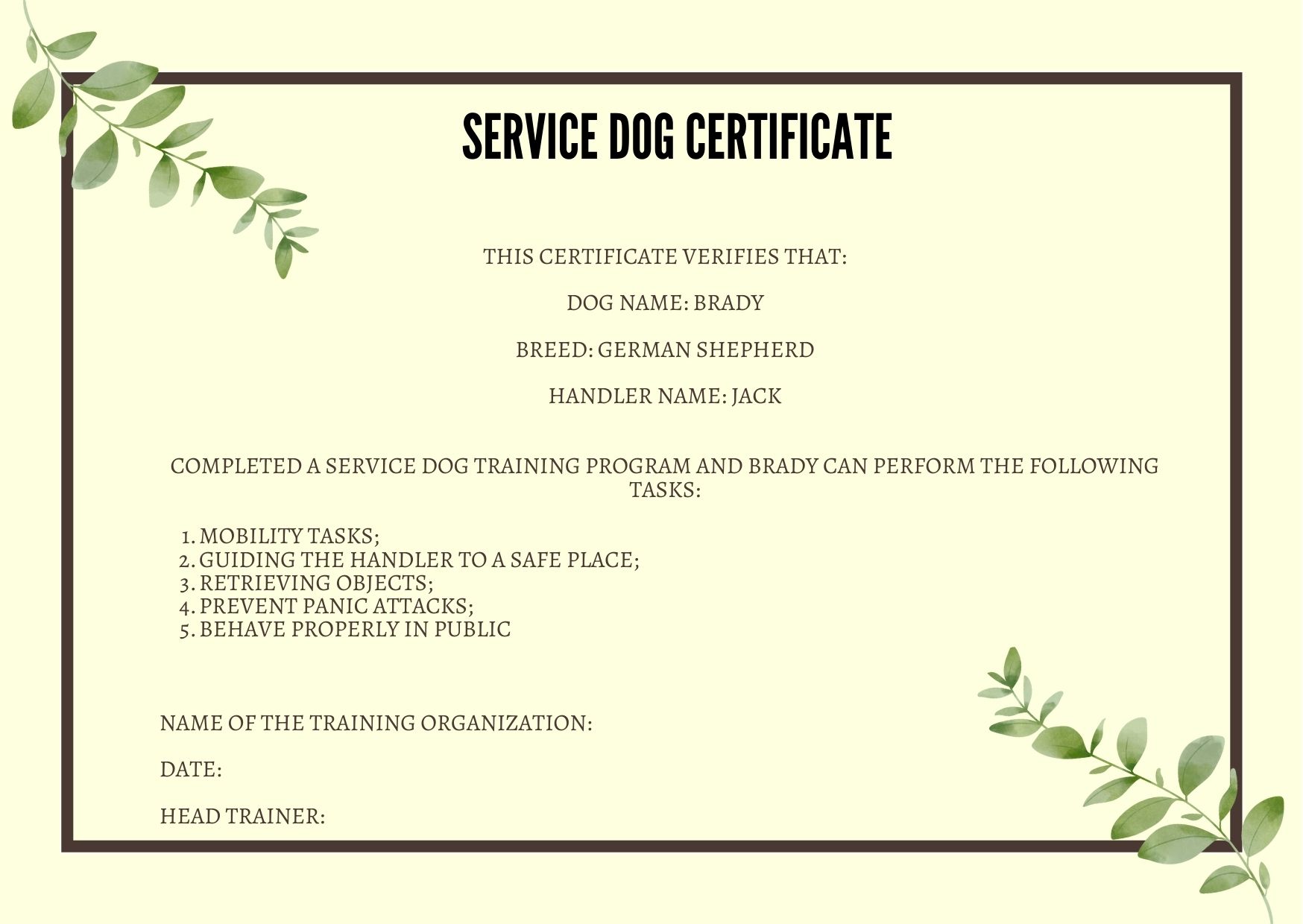
Dogs are amazing creatures who prove their incredible loving nature and unconditional loyalty every day! They make our lives full of happiness and fun and teach us to be better people!
If you are a dog lover, who is considering welcoming a paw friend into their home, what breed characteristics would you take into account? Maybe you will look for a friendly, smart, and people-oriented doggo who has the same energy levels as you...and who will live as long as possible!
One of the biggest concerns for all pet parents, particularly those with dogs, is their paw friends’ shorter lifespan compared to that of humans. Having said that, the average breed’s lifespan is among the factors that play a role when choosing a dog as your paw family member.
Today, we will discuss several common factors that influence dogs’ lifespans and some longest-living dog breeds and will give you insight into their characteristics. If you are looking for a paw companion, today’s article will definitely be useful!
Factors that Influence Dogs’ Lifespan
The lifespan of dogs is affected by a variety of factors, that may range from genetic predispositions to lifestyle and environmental conditions.
It is important to be familiar with these factors to provide your furry friend with a healthy and loving environment and ensure they will live a long and happy life!

Genetics
Similar to humans, genetics have a significant impact on our paw friends’ health and overall well-being as well. Some breeds are prone to specific genetic conditions that can affect their longevity. For example, breeds like:
-
the Labrador/Golden Retriever, Saint Bernard, German Shepherd, Newfoundland, French Bulldog, and Great Dane, are prone to hip dysplasia;
-
the French Bulldog, Bulldog, Pug, Shih Tzu, Boston Terrier, Boxer, Pekingese, Japanese Chin, etc., are predisposed to Brachycephalic Obstructive Airway Syndrome (BOAS);
-
the Wirehaired Fox Terrier, Boxer, Dalmatian, Golden Retriever, Chinese Shar-Pei, Lhasa Apso, Scottish Terrier, etc. develop allergies more easily;
-
the Rottweiler, Schnauzer, Scottish Terrier, Saint Bernard, Weimaraner, Staffordshire Bull Terrier, are more prone to developing different types of cancer.
Furthermore, purebred dogs tend to have specific traits artificially selected and reinforced over generations, which could make them more susceptible to certain health conditions and affect their lifespan.
Diet & Nutrition
Providing a balanced diet with the right nutrients for your canine, based on their age, breed, and lifestyle, has a great impact on their overall well-being!
Make sure to avoid food with many artificial ingredients and coloration and opt for high-quality food, including homemade.
When talking about diet and nutrition, maintaining an appropriate caloric intake is essential!
Even if you provide your furry friend with high-quality food, it should be given in an appropriate amount. Otherwise, your dog may gain weight and easily become obese, which in turn, has a negative impact on their health.
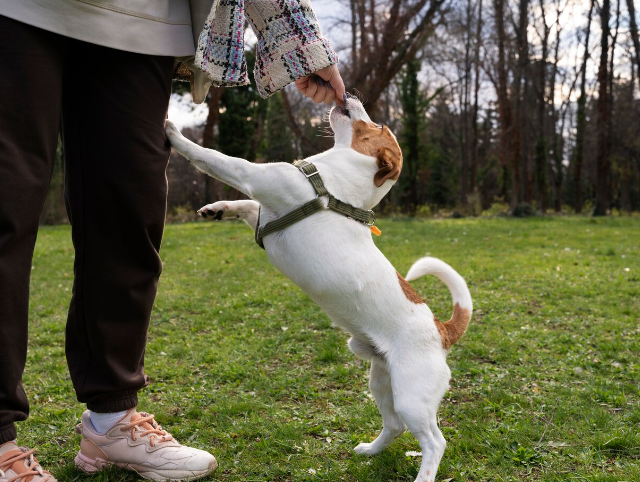
Physical Activity & Mental Stimulation
Regular physical activity is crucial in maintaining a healthy weight, supporting cardiovascular functions, and preventing your paw friend from getting bored and potentially destructive.
High-energy breeds need more exercise and mental stimulation to stay healthy and not develop behavioral issues out of boredom. If you consider getting a dog of an energetic breed, ensure you are able to meet their needs for physical and mental stimulation.
However, whether you opt for a low-energy / high-energy dog, exercise, suitable for their unique needs will be needed.
Keeping your dog’s mind sharp is also crucial for their overall well-being. Providing mental stimulation through training, toys, and fun activities will not only keep your paw partner engaged, but will also avoid behavioral issues, and help strengthen your bond.
Healthcare and Veterinary Visits
Regular veterinary checkups are crucial for your paw friend’s health! They help detect and treat potential underlying health conditions promptly.
Vaccinations, especially against rabies, parasite control (heartworm prevention, flea, and tick control), and dental care are important factors that help ensure your dog’s health.

Breed-Specific Needs
Every dog has their individual needs, that are determined by the breed and the specific individual.
Understanding and meeting your furry buddy’s specific needs will help you make you tailor your care approach and ensure their health, happiness, and overall well-being.
Remember to be patient and respectful towards your paw partner.
Size & Weight
Dogs are species with a wide size range that affects their lifespan. You may be interested to know that smaller dog breeds tend to live longer than larger breeds. Why is that?
According to studies and different theories, large dogs age quicker than small dogs, which is why they die at a younger age. Also, age-related health issues are more likely to occur in large dogs at a younger age, compared to dogs of smaller breeds.
Another factor to consider is the susceptibility of large dogs to cancer. Since they grow faster, their cells might also divide at an accelerated pace, which is characteristic of cancer.
As we have mentioned above, obesity is a factor that affects the longevity of our paw friends. Overweight dogs are at a higher risk for developing conditions like diabetes, heart disease, and joint problems, which can reduce lifespan.
Dog Breeds That Live the Longest
Before we start listing the breeds with the longest lifespan, let’s clarify that everything depends on the specific dog, and deviations from the standard can always occur. Also, we will list several of them but they are also others that deserve to be included.
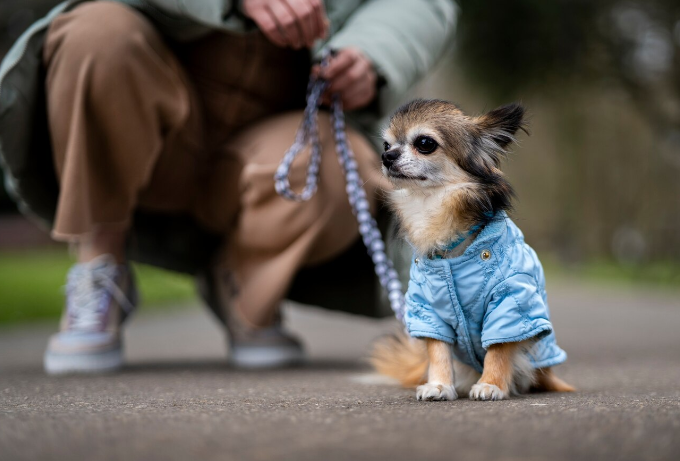
Chihuahua
Lifespan: 12-20 years
A small body with a big personality! We believe you will all agree with that!
If a dog of this breed is your paw companion, you probably enjoy their affection, loyalty, and the close bond they have developed with you.
And if you are a stranger who dares to cross their path, you may experience their wrath! Continues barking to warn you and even attempts to jump on you may be displayed by a representative of this breed.
However, at the end of the they, these little cute fellows exhibit such behaviors mainly because they are great watchdogs and out of fear. Their small size does not allow them to have other defensive mechanisms besides barking. Try to befriend these sweet barkers instead and become their friend whose company they will enjoy!
When it comes to their trainability, you shouldn’t underestimate them. They are trainable and smart but can also be stubborn. You need to be patient, and consistent and encourage them through positive reinforcement. Also, some of you may be surprised to know that these canines can become great service dogs when properly trained, particularly for mental health issues.
Their energy levels are rather moderate. They enjoy short bursts of activity and playtime but can also be wonderful lap dogs who enjoy your attention!
Chihuahuas benefit from regular walks and interactive toys to keep their minds engaged.
Due to their small size, these paw friends are suitable for apartment living. If you have small children, make sure to supervise their interaction with your Chihuahua, to ensure no incidents will occur.

Dachshund
Lifespan: 12-16 years
You might have heard representatives of this breed referred to as “wiener dogs”, “sausages”, or “badger dogs”. Their distinct long bodies and short legs make these dogs stand out and be noticed by passersby.
It is not only their body shape, though, that makes these lovely canines interesting and welcomed by many people. They are very courageous, lively, curious, and pretty smart, too! However, there are some negative characteristics, common to the breed, that should be taken into account.
Dachshunds can be truly stubborn and independent. Also, they have a strong prey drive, as they were bred to sense and chase badgers and other small burrow-dwelling animals. If not properly socialized from an early age, Dachshunds can become challenging to handle.
The best thing to do to avoid behavioral issues, especially out of boredom, is to invest time to stimulate your dog physically and mentally. With consistency, patience, and care, these canines can become wonderful paw companions and service dogs or companion animals. Their cheerful nature can quickly lift their owner’s spirit!
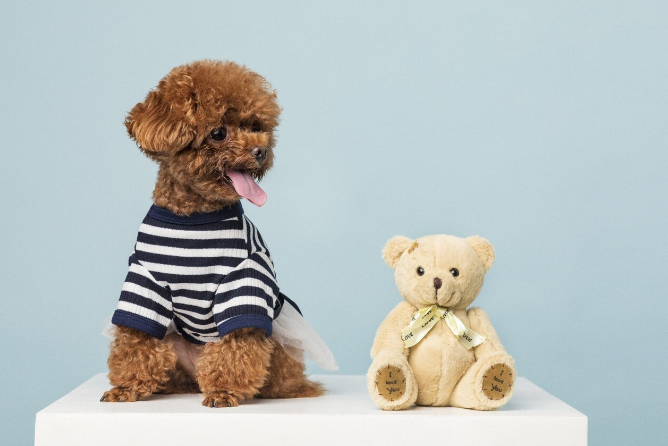
Toy Poodle
Lifespan: 12-15 years
The smallest of the four Poodle sizes, the Toy Poodle can definitely melt your heart! These doggies are not only extremely cute but also have great personalities!
They are intelligent, active, alert, and hypoallergenic! Yes, if you are allergic to dog dander, the Poodle, including the Toy Poodle, may be a great fit for you! However, these canines’ coats require regular brushing and grooming, and the maintenance becomes more extensive as they become adults.
These cute little fellows are sociable and get along well with people and other pets when properly socialized. Also, they are eager to please and highly trainable! If you consider training your fluffy friend in basic obedience, agility, or service dog tasks, go ahead!
Poodles in general are highly energetic, so make sure to provide your paw friend with many options to exercise, and challenge their agility and intellect. This will help them remain physically and mentally fit, which, in turn, will contribute to improving their health.
The Toy Poodle has the reputation of not being the best dog breed for small children. If you opt for a doggie of this breed and have small kids, make sure to monitor their interactions and socialize both parties involved.

Australian Cattle Dog (a.k.a Blue / Red Heeler)
Lifespan: 13-15 years
Hardworking, intelligent, and loyal- these are only part of the great qualities of the dogs of this breed!
If you are looking for a dog who is highly trainable and eager to work, the Australian Cattle Dog may be a great option for you! However, the strong herding instincts of these canines can make them reactive, so it is essential to work with them and socialize them as early as possible. This will be particularly helpful to families with small children, where the dog may want to “herd” the child and nip it.
If you are patient, and consistent and use positive reinforcement, you may be able to shape your dog’s behavior and turn them into an amazing paw companion! Whether it is agility, obedience, or advanced training— the intelligence, high work ethic, and loyalty of these dogs will help them excel in all types of tasks!
However, if you do not have any experience as a dog owner, training an Australian Cattle Dog may be a bit challenging without thorough preparation and research.
The dogs of the breed thrive on physical and mental stimulation and are more suitable for house living with sufficient space to run. They are very adaptable, though, so if you live in an apartment and are considering getting a dog of this breed, make sure they will have enough room to move and you will be able to meet their requirements for physical and mental stimulation.
If you (and your family) are active and enjoy outdoor activities, the Australian Cattle Dog may be a great companion for you! Also, these canines develop strong bonds with their beloved humans and are very loyal to them!

Shih Tzu
Lifespan: 10-16 years
These sweet little fluffy balls are simply adorable!
Thanks to their affectionate and friendly nature and outgoing temperament, they can become your best paw companions!
Your furry buddy will likely greet all the people and dogs they meet! Getting along with other pets and people makes them perfect for big families who are looking for a sweet and gentle companion.
While these cuties show some tendencies to be independent and somewhat stubborn, they respond well to positive reinforcement. This is good news for those of you who are considering training their paw friends of the Shih Tzu breed in basic obedience or more advanced tasks.
Talking about more advanced training, the loving nature of the breed’s representatives makes them great candidates for psychiatric service dog work. Deep Pressure Therapy, nose-nudging, giving a kiss, and any type of tactile stimulation would be easy tasks to perform by your gentle fluffy friend.
When it comes to energy levels, the Shih Tzus have moderate to low energy levels. They need regular walks and will definitely enjoy their playtime. However, relaxation at home would be something they would also like a lot!
Due to their small size and moderate energy levels, these canines are suitable for apartment living.
Another great advantage of this breed is its low shedding levels. The Shih Tzus are considered hypoallergenic and are perfect for individuals who want to have a paw companion but are allergic to dog fur.

Yorkshire Terrier
Lifespan: 13-16 years
We won’t hide that we love Yorkies!
They are lovely, super smart, affectionate, highly trainable and hypoallergenic! However, don’t let their sweet look deceive you!
While they are of a small size, their personality can be quite big! It is not uncommon to see a Yorkie who wants to show off before a large dog and does not show any signs of fear. These little fellows can be very courageous for their small size!
If you have a Yorkie at home, we can guarantee you will never feel alone! Your paw friend will be eager to play with you, cuddle with you, and even sleep in your bed! These doggies develop very strong bonds with their family members and may show a bigger interest in being around their beloved humans instead of other dogs.
Thanks to their intelligence, these furry friends are highly trainable and quickly pick up on cues! Whether you want to train your Yorkie in basic obedience or service dog tasks, suitable for them, considering their size, go ahead! Your furry friend will fascinate you!
The energy levels of these canines are moderate, so you should invest time in walks and playtime. However, you will also be able to enjoy a calm and relaxed time at home with your paw companion.
If you are allergic to dog dander, a doggie of the Yorkshire Terrier may be a great option for you!
If you have small children and are considering getting a Yorkie, make sure to teach them both how to properly interact with each other. The dogs of the breed are very loving and loyal, however, they can also show their big personality if not handled properly.
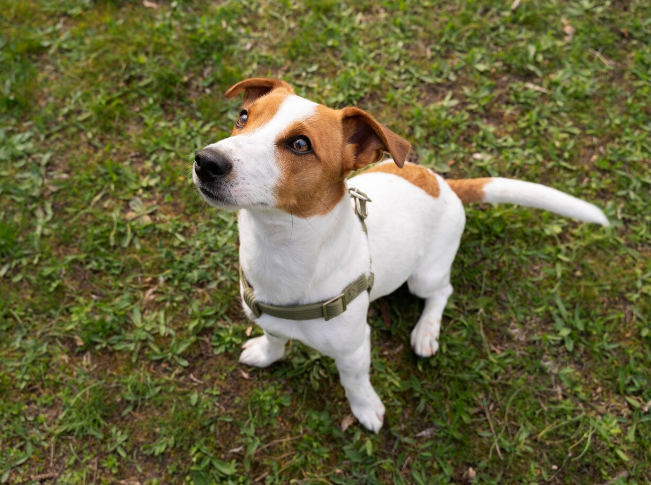
Jack Russell Terrier
Lifespan: 13-16 years
Do you want to get into shape and play fetch all day long? A dog of the Jack Russell Terrier breed can help you!
Extremely energetic, these dogs are not everyone’s cup of tea. However, if you are energetic, and have time to exercise your paw friend, you and your Jack Russel Terrier may be the perfect match!
Along with their high energy levels, let’s add these dogs’ fearlessness! It is not uncommon to see a Jack Russell energetically playing with large dogs showing them who is the boss.
These dogs are trainable and very smart but can be overly confident and stubborn. If you intend to train your furry friend, it is highly recommended that you start at a young age and be very patient and consistent. Positive reinforcement along with a gentle but firm approach can bring the best out of your doggo!
Early socialization is as important for these dogs as yearly training. They can be quite territorial, so it is important to ensure they do not show territorial tendencies, especially if they live with other pets. If live in a multi-pet household, it is crucial to work on your dog’s skills to peacefully coexist with other animals. Some breed representatives do not have any issues sharing territory with other pets, while others exhibit very dominant and even aggressive behavior.
Providing your paw friend with sufficient physical and mental stimulation is crucial to ensure they are fit and able to spend their excess energy. Otherwise, you should be prepared to deal with various behavioral issues out of boredom and insufficient exercise.






